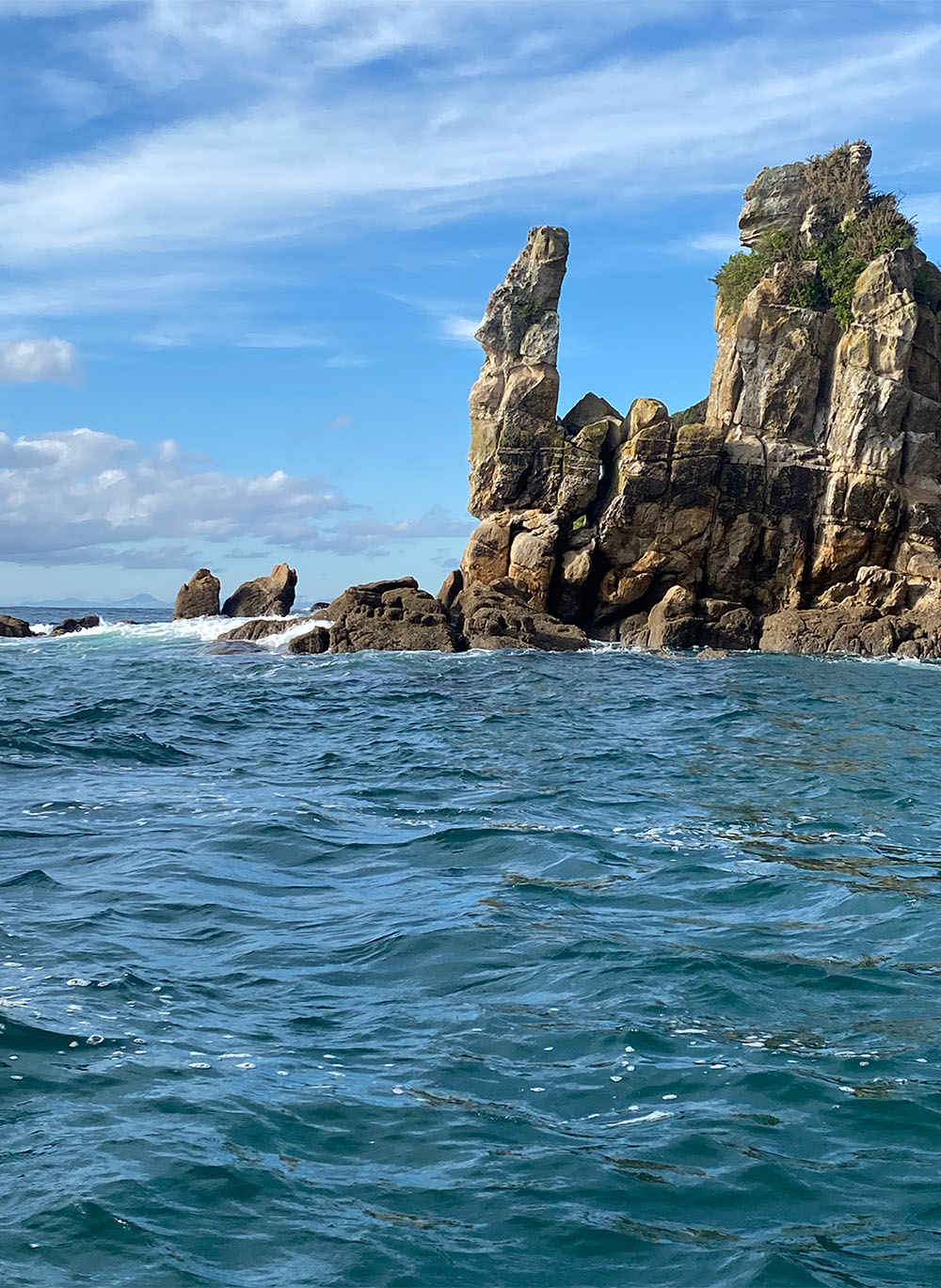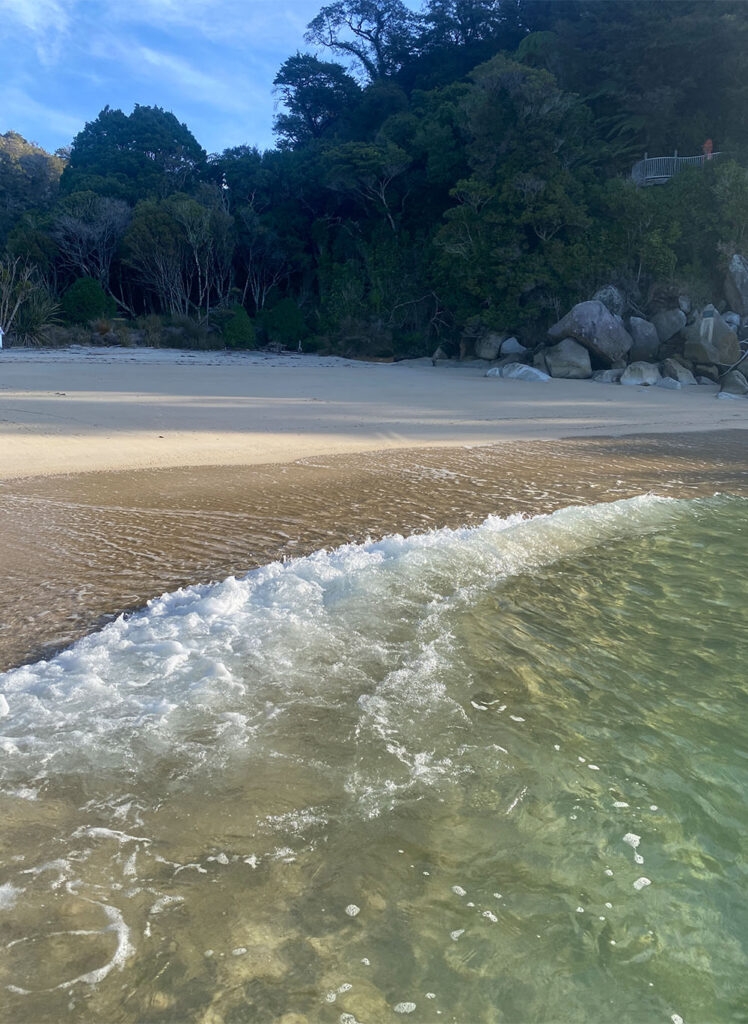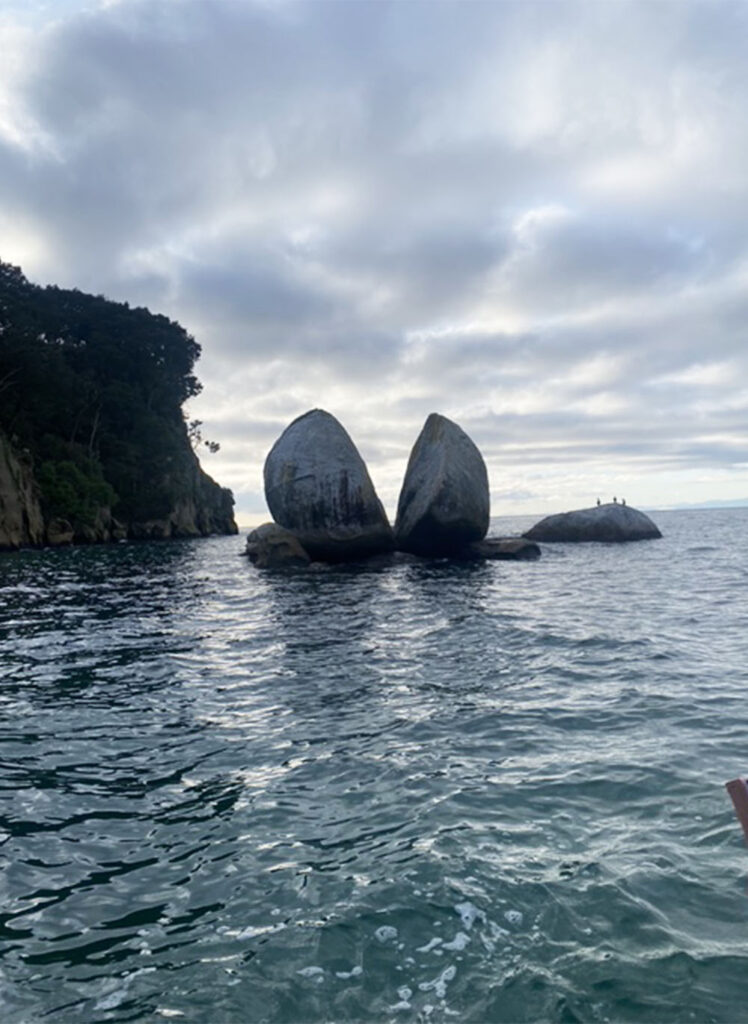

Canopies and clarity
February 27, 2025
To visit Abel Tasman National Park in the off-season is to discover wild beauty uncluttered by crowds. Sarah Daniell finds her own pace in a self-guided day walk from Tōtaranui to Medlands Beach.
Abel Tasman sailed into this jewel-like world in 1642, the first European to do so. He stuck to the coast, didn’t land, but the name stuck.
While Tasman’s legacy is hardly bathed in glory, even by his own employers the Dutch East India Company, it would be the Europeans who arrived 125 years later that would wreak lasting havoc, including deforestation and introduced predators.
Much of the work in the smallest of Aotearoa’s national parks (23,000 hectare) has been focused on the regeneration of forest and species endemic to Aotearoa. In 2023 we have some of the most devastating flooding in our history, and in June that year I head south.
It wasn’t the first time. I’d discovered Abel Tasman National Park by boat in the early 2000s. We sail from Mana Marina, in Porirua, taking a mean Raukawa Moana (Cook Strait) tail wind to Rangitoto ki te Tonga (Durville Island) where we anchor for the night and catch blue cod in the fading light. The next day, a pod of dolphins – 100 or so we guess – ushers us into Te Tai-o-Aorere (Tasman Bay).
We anchor in tiny bays where capricious currents and afternoon winds can make for challenging holding. We’re always braced to move and sometimes that means moving in the middle of the night. No holding, in life or sea, is guaranteed. Winds will happen, turbulence. Sometimes hauling anchor, figuratively or literally, is a monumental pain but it’s inevitable when you’re in the elements.
The second time I visit is also by boat but this one is a solid aluminium torpedo filled with tourists keen for escape among the comfort of strangers: a stupendously confident American family, including two teenage sons; whānau from Te Wāipopounamu who have co-ordinated a reunion for the ages; a couple from Pōneke who’d are meant to be in Europe, but he’s too sick with cancer to travel that far.

He’s still youngish, tenacious, and you can see he and his wife – especially his wife – are clinging to the only thing they reliably can: each other and the present. Then there’s me, from Tāmaki Makaurau, taking a five-to-six hour walk in a park.
To walk, it’s said, is to find yourself being spoken to by angels. That’s beautiful and noble but, truth is, I just feel like running away. I want to escape reality which has taken on a harsh light lately, and where better to start than a self-guided day walk in a national park with clearly defined entry and exit points and a capable crew who know where to find you.
From Kaiteriteri Beach, we head out into Te Tai O Aorere and Tōtaranui Bay. The charismatic skipper, who has the looks and demeanour of a Liam Neeson/Bradley Cooper love child, issues the decree on health and safety. The support crew oscillates between joke-cracking and providing solid intel on points of interest, like the Tonga Marine Reserve, geology, history, fluttering shearwaters and fur seal colonies.

The eastern coastline is guarded by bushclad granite leviathans. At Māharau is Tokangawhā, or Split Apple Rock, which scientists believe is shaped 120 million years ago in the ice age. Māori myth says it’s torn in half by two feuding chiefs.
From there we surge north, up to Tōtaranui where I jump off to start my short walk to clarity.
Despite clear instructions, I immediately take a wrong turn at the beach – heading right and continuing for about 20 minutes – until something registers as being off. I turn back, clambering over the driftwood covered beach and boardwalks over wetlands, past Goat Bay, and I enter the bush trail. It’s distractingly beautiful and photogenic. Gaps in beech and rātā forest reveal staggering turquoise-coloured bays below; birds … pīwakawaka, korimako, kererū, tūī, and pārekareka … are everywhere.
The track is moderately challenging on the inclines but mostly easy, allowing me to wander and look up at the canopy of sub-tropical forest, and out to shots of blue ocean. The light changes and shifts just as the tides do here. At Awaroa, it’s coming in so I strip off to my undies and walk across the sparkling inlet up to my knees, and onto golden sand. From here it’s another hour or so to Bark Bay and Medlands Beach where the boat will meet me.
But first I meet the Pou Whenua of Ngamamaku-Wī Parana, on the track at Mārahau. He’s named after the Te Atiawa chief who was part of the last tribal migration of Māori from the North Island in the 1820s. He’s holding a whakapakoko, or god stick. A spiritual leader of his people, Ngamamaku was revered by both Maori and Pākehā.
I stand for a while and close my eyes, wishing I could keep going, knowing I’ll come back.
I’ve not seen a single soul though there are some I know have taken the same trail. Then finally, at Medlands, just when I think I’m alone and about to strip off and jump into the cool waves, a couple arrives. I face the horizon, waiting for the sound of the motor heralding my departure from this world, back to the other.
For more information about Wilsons Abel Tasman, visit: abeltasman.co.nz
